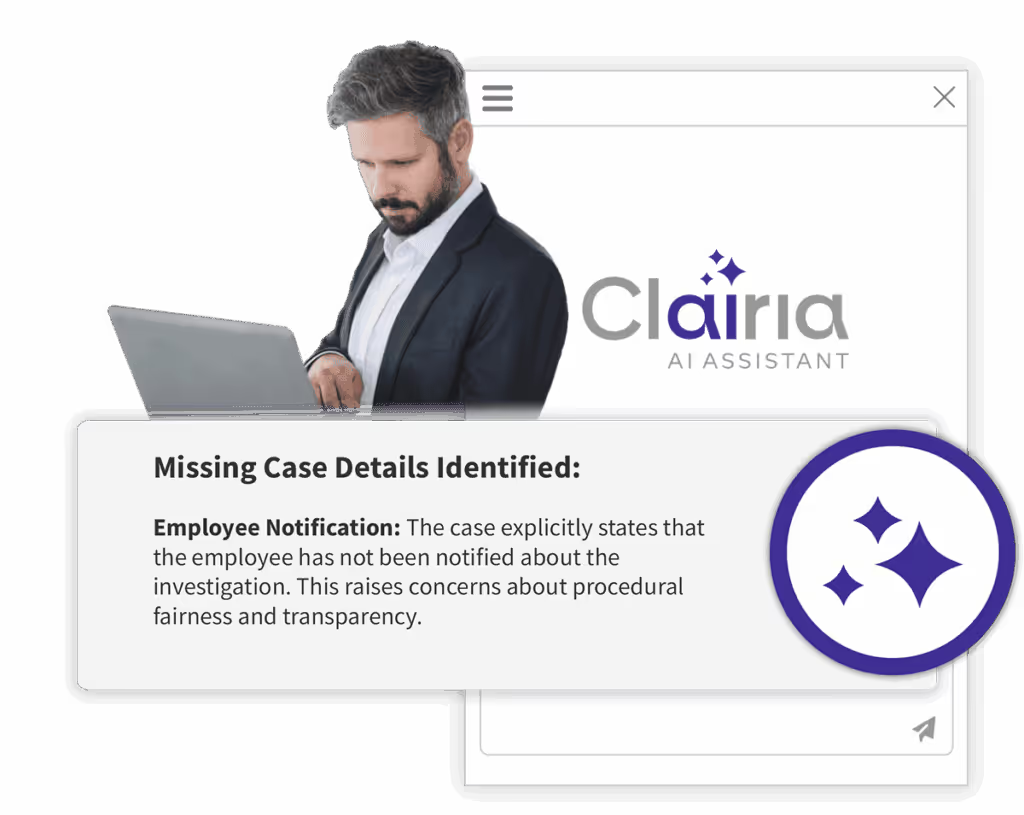Mishandling human resources investigations can have dire consequences for the complainant, the subject, and the company. Don’t make these investigation mistakes.
Internal investigations are necessary, regardless of the size of business you operate, but even the smallest error can ruin an entire workplace investigation. Below you'll find seven of the most common workplace investigation mistakes that companies make.
(The articles “Five Common Mistakes in Internal Investigations” by Tim Mohr and Nidhi Rao and “The Top 5 Pitfalls to Avoid When Conducting Workplace Investigations” by Julie A. Vogelzang have helped us shape our list of the most common workplace investigation mistakes.)
Mistake #1: No Reporting System
Employees need to know the process for making a complaint and investigators need to know the company policies on handling complaints, as well as whom to report to. Once a complaint is made, employers are obligated in investigate the claim, but if there is no system in place regarding what to do next, how can any investigation run smoothly.
Most of the time, human resources conducts the investigation process (individually or in teams) and provides a report of findings to management to decide on the appropriate action to be taken and how to implement it. To conduct a proper investigation, establish clear lines of communication, roles for each team member and an outline of that they are responsible for. A reporting system makes it easier to assign cases, check the progress of each investigation and ensure that no case gets left behind.
Mistake #2: Waiting...
When a complaint is made, it needs to be investigated immediately- waiting will not make it go away. If you leave the complaint, chances are, it will grow to be a larger issue and will have a higher probability of ending up in court. It's also important to note that employers are responsible for demonstrating a prompt response to all complaints made. The solution to avoiding this mistake is simple- don't wait!
RELATED: 3 Investigation Report Writing Mistakes You're Still Making
Mistake #3: Improper Evidence Collection and Analysis
Once an investigation starts, you want to make sure the subject doesn't have access to any of the evidence supporting the case. If they do, they could destroy it or modify it, making it irrelevant. Tim Mohr and Nidhi Rao also recommend abiding by company policy when collecting evidence in order to avoid potential accusations. Tim Mohr and Nidhi Rao also suggest the following from their article during this phase of the investigation:
Preservation Order: Firstly, determine which documents may be relevant during the investigation. Depending on the scope of the investigation, an organization may need to issue a document preservation order. If an organization neglects to issue a preservation order in a timely manner, a possibility exists that pertinent information and evidence may be destroyed.
Collection of Evidence: A crucial component of evidence gathering is ensuring that the chain of custody is documented. This documentation should include a description of how the information was obtained, when it was collected, who has handled it, where and how it was transported, and where it's stored and maintained. Improper documentation of the chain of custody during the collection process may result in information becoming inadmissible in court.
Need help executing an effective investigation? Here's a step-by-step article on how to conduct workplace investigations.
Mistake #4: Poor Team Member Selection
Ensure that the investigation team is comprised of individuals who do not have any connection to the situation or the people involved in the incident. This helps to eliminate any bias during the process. It’s also important to assign investigators to cases that they can handle. You want to assign experienced investigators to complex cases, and smaller cases to those who are starting out. If the investigation is conducted by those connected to the incident, their personal opinion will get in the way of the case. Also, they could fall victim to retaliation from others in the workplace based on the outcome of the investigation.You might also benefit from adding professionals from outside of the organization to your investigative team to ensure that the investigation is conducted properly.
Mistake #5: Poor Interviewing
Investigation interviews are crucial to the success of the investigation. The article "Five Common Mistakes in Internal Investigations", focuses on the importance of interviews during the investigation process:
“Interviews are the greatest source of information for any investigation. Interviewers must be experienced, as inexperienced investigators may act in a combative or unknowledgeable manner that serves no purpose. Investigators should review applicable evidence and interview individuals who may have knowledge related to the allegation prior to interviewing the suspect. This will assist the investigators in asking pertinent questions when they interview the subject and allow them to refer to relevant and potentially incriminating documents during the interview.It is recommended that two investigators be present during an interview so that one can act as a witness and be responsible for documenting the findings from the interview. The investigative team should also ensure that interview notes are documented in writing, are sufficiently detailed and capture the relevant content of the conversation.”
Mistake #6: Complainant Punishment
The complainant already feels violated or stressed about their workplace situation, don't make it worse by removing them from their position and placing them in a different department. Try to make it "business as usual" to the greatest extent for the complainant, punishments go to the subject.
RELATED: Top 5 Investigation Interview Mistakes
Mistake #7: Ineffective Conclusions
Make sure the punishment fits the crime. To ensure that the incident does not happen again, properly train the subject to correct their action and explain to them why they are being reprimanded the way they are. Inform them that you enforce your policies and those who choose not to abide by them will face the consequences. Not all cases are the same, therefore, solutions should be concluded on a case-by-case basis.










